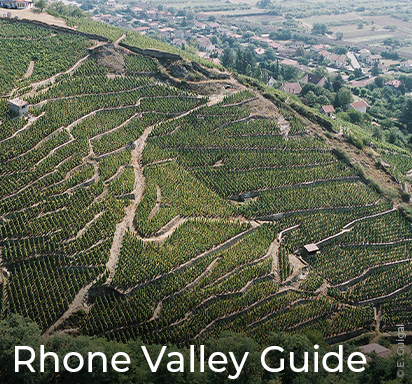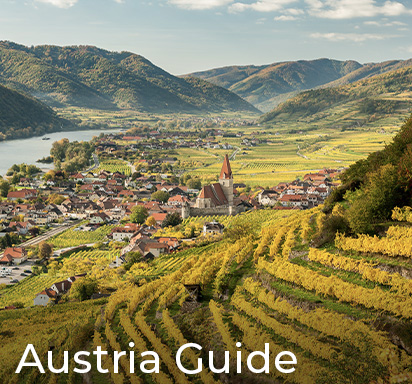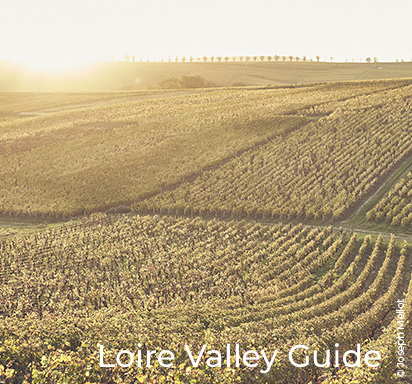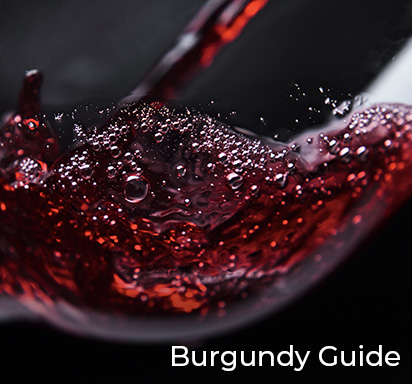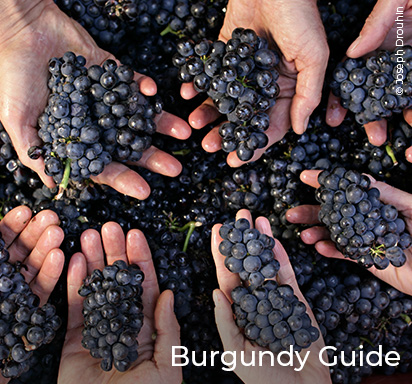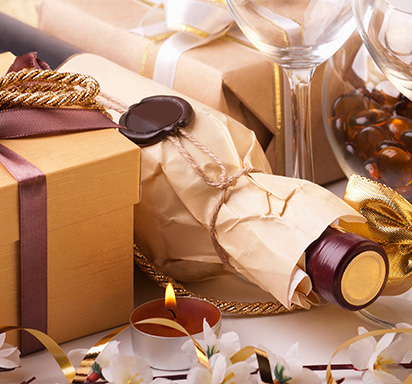Wine Tasting Tips : Learn How to Taste Wine
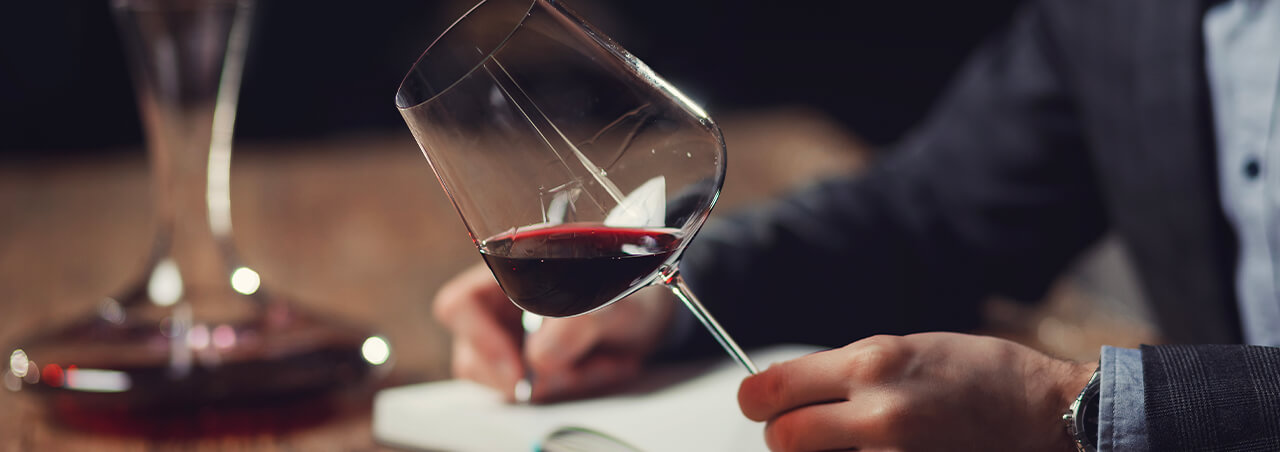
Wine tasting is a way to unravel this story and begin to comprehend the producer’s message. Follow these wine tasting tips to develop your senses, gain a deeper appreciation for the wine and the unique message it carries.
A STEP-BY-STEP GUIDE TO WINE TASTING
Each wine is a message in a bottle just waiting to be understood. This message, transmitted from producer to consumer, can be simple or complex, contemporary or timeless. Each bottle tells the story of a certain terroir, the grape varieties planted there, the climate conditions of one vintage or more, and the know-how used to transform these grapes into wines to be shared and enjoyed. Wine tasting is a way to unravel this story and begin to comprehend the producer’s message.
Sommeliers are individuals particularly gifted at picking up on even the subtlest nuances in a glass of wine. They train their noses and palates to do so by following a step-by-step process, easy to imitate and learn at home. The next time you open a bottle, try following these wine tasting tips to develop your senses. Doing so will help you gain a deeper appreciation for the wine and the unique message it carries.
WINE TASTING STEP 1: GET READY
Before diving into your wine tasting, it is important to assess the conditions under which it is taking place. Are you in a crowded, noisy room or somewhere more peaceful? Is there ample natural light filtering in or is your environment dimly lit? Are there smells of food lingering in the air? Perfume or cologne, perhaps? Generally speaking, the more neutral your tasting environment, the fewer distractions stand between you and your glass of wine. And while we can’t always change the conditions of our wine tasting environment, it is important to be aware of them, in the very least.
Next, assess yourself and make sure your senses are fully engaged. Most sommeliers recommend not eating for at least one hour prior to wine tasting, in order to neutralize the palate. Avoid, in particular, spicy or acidic foods, which can affect the way you perceive the wine.
Finally, assess the conditions of the wine itself. Your glass should be at most one-third full. Make sure the wine is served in a clean glass. If it is not, try to neutralize the glass by rinsing it with wine, not water. Take care to use a glass with the right shape for the type of wine you’re tasting – get a tall, broad bowl for full-bodied reds, for example. Also, make sure the wine is not served too cold (this will mask some of the more nuanced aromas) or too warm (this will bring out the smell of ethanol, which will overwhelm subtler aromas). If recommended, open the bottle and/or decant it for a few hours before the tasting.
WINE TASTING STEP 2: LOOK
First, look straight through your glass of wine from the side to check its clarity. A murky quality may indicate chemical instabilities or contamination. Then, again, it may also simply mean that the wine was not filtered before bottling, a stylistic decision. A bright and clear aspect is always a good sign. Jot down any observations.
Next, tilt your wine at a slight angle and, holding the glass over a white surface, observe its color. This may reveal clues about grape variety and age. A bright crimson color is often associated with Pinot Noir, while a deeper purple or violet may indicate Syrah, and deep ruby could mean Cabernet Sauvignon in the glass. Some white wines develop tawny or brownish hues as they age, while an orange or rusty brick tint may indicate age on a red wine. Again, jot down any observations you may have.
Depth of color may also reveal how the wine was vinified or aged, with a more concentrated tone signaling a longer period of maceration (contact between the juice and grape skins). A richer color in both white wines and red wines might indicate that the wine was aged in oak barrels.
And to finish your visual assessment, swirl the glass to observe the “body” of your wine, the way it moves. Dense “legs” or “tears” running down the side of the glass usually mean that the wine has a higher alcohol and glycerin content, which (in a good wine) results in a more generous texture on the palate. Take note of all these observations as well.
WINE TASTING STEP 3: SMELL
The time has now come to lift your glass of wine, give it a swirl and take your first sniff. When “nosing” a wine, you’ll first want to look out for any “off-aromas”, indicating that the wine is flawed. A wet, moldy cardboard aroma is a telltale sign of a corked wine. A vinegar smell means volatile acidity, while a pungent smell of nail polish signals ethyl acetate. In these cases, you may want to discard the wine and find another bottle for your wine tasting. A sweaty, barnyard smell indicates the presence of a yeast called Brettanomyces (or “brett” for short), which can give certain red wines a pleasant earthy touch. Too much of it, however, and the yeast will overpower the fruit aromas.
Once you’ve ruled out these off-aromas, you may continue on your olfactory journey, perhaps the most important part of the wine tasting experience. While the many different aromas of a wine tend to interlace to form a single profile, it may help you to divide them into three main categories: primary, secondary and tertiary aromas. As soon as you recognize an aroma, remember to write it down. You will need to use these tasting notes in the final step.
Primary Aromas
Primary wine aromas are those that come directly from the grape, terroir of origin and the climate of the vintage. Swirl your glass again and take a series of short sniffs
Detect any fruit? Think of large categories of fruit aromas first: red fruit, black fruit or blue fruit for red wines and stone fruit, tropical fruit or citrus for white wines. If you are able to pick out any specific fruits, all the better. While certain grape varieties tend to be associated with specific fruit aromas, such as the blackcurrant of Cabernet Sauvignon and fresh strawberries of Pinot Noir, these can vary significantly based on the climate in which the grapes were grown. For example, Chardonnay can display a wide range of fruit aromas in the glass, from tart citrus in cold climate versions to riper, sweeter pineapple in warm climate Chardonnay.
Some wines also display primary aromas of flowers, herbs, spices and vegetables. Think of the green pepper aromas of cold-climate Cabernet Sauvignon, the black pepper of Syrah, or the freshly cut grass of Sauvignon Blanc. While Rhone Valley reds often show touches of spices and garrigue, cool climate whites (like Loire Valley Chenin Blanc, Alsatian Riesling and Gewurztraminer) often reveal floral fragrances in the glass.
And when terroir and grape variety unite, the result can be a range of “earthy” aromas, like the fresh forest floor, truffle and wet hay aromas of Burgundy Pinot Noir or the chalky mineral aromas of award-winning Chardonnay wines from Chablis. Make sure to note these down too.
Secondary Aromas
The secondary aromas of a wine are those that derive from the winemaking process at the winery, specifically fermentation. These smells, along with tertiary aromas, are commonly referred to as the “bouquet” of a wine.
Think of the smell of freshly baked brioche wafting off a flute of Champagne. This is an “autolytic” aroma resulting from extended contact between wine and its lees (dead yeast) during secondary fermentation. During malolactic fermentation in white wines, bacteria convert malic acid into softer lactic acid, leaving behind dairy aromas of butter and cream, nutty aromas like hazelnut, and chocolate. The wild yeast Brett can also contribute a bouquet of cloves, spices and wild game, as well as mushrooms, band-aids and bacon
Other secondary aromas may include aged cheese, sourdough, brewer’s yeast and beer. Do you smell any of these in your glass of wine? If so, jot them down!
Tertiary Aromas
And finally, tertiary aromas are those that derive from the aging process of a wine, following fermentation. Together with secondary aromas, they form the “bouquet.”
Exposing wine to trace amounts of oxygen as it ages can result in common aromas of roasted hazelnuts and peanuts. In oxidative wines such as Oloroso and Amontillado Sherry, a deliberate exposure to oxygen lends luscious tertiary aromas of toffee and caramel to the wine.
Perhaps the most important tertiary aromas of a wine arise from its aging in oak barrels. For centuries, specialized coopers have created a wide range of different oak vessels to age different styles of wine. Indeed, aging a wine is referred to as “elevage” in French, which translates directly to “upbringing” or “raising.” This process can be tweaked in a variety of ways to achieve different outcomes.
The elevage of a wine can take a few months (for just a touch of oak influence) or several years (for a more gradual integration of oak nuances). It can happen in barrels of French oak (which add subtler notes of spice and smoke) or American oak (which lend more potent aromas of vanilla and coconut to the finished wine). These oak vessels vary in size from the standard 225L barriques popularized by the great estates of Bordeaux, to 300L hogshead barrels, to massive 1,500-10,000L botti used to make Brunello di Montalcino. Generally, the larger the barrel, the more subtle the oak influence on the wine. The “fill” of the barrel is also important, with new oak barrels imparting much stronger aromas to the wines aged in them than barrels used for one or more previous vintages.
So swirl your glass of wine and nose it again. Do you smell roasted nuts, caramel, espresso beans, tobacco, smoke, toast, baking spices (like cinnamon, clove or nutmeg), vanilla or coconut? If so, jot these observations down. And, since smells can be subjective, feel free to also write down anything else you smell.
WINE TASTING STEP 4: TASTE
Once you have thoroughly nosed your wine, it’s finally time to taste it. Take a small sip and try churning it on your palate. This aerates the wine, revealing more of its flavors. Since taste buds in different areas of the tongue pick up on different types of flavors, it is important to move the wine around, exposing it to all surfaces of your mouth. As you move the wine around, you will start to taste some of the aromas you picked up on while nosing it, but in “flavor form.” Take note of these by underlining aromas that show up on the palate as well and write down any additional flavors observed. Is the palate of your wine consistent with its nose? If not, how is it different?
At this point, you may also pick up on one of the key components of a wine’s “palate,” which is its acidity, associated with a sour taste. Acidity is crucial, as it helps preserve the wine and keep it fresh, sometimes even after decades of age. Acidity adds a certain lift, while its absence can leave a wine tasting flabby. Reflect on the acidity of the wine in front of you. Does it make your lips pucker and your mouth water?
Balancing out a wine’s acidity is its sweetness. The higher the degree of sugar in a glass of wine, the more the sensation of sweetness will counteract the sour flavors from its acidity. Wines tend to be classified as dry, off-dry, medium or sweet based on the amount of sugar they contain. How is the level of sweetness in your wine?
If you feel a drying sensation on your palate, this is likely caused by the wine’s tannin, another main preservative, contributing to a wine’s aging potential and “texture” on the palate. Since tannins come from grape skins, they are more commonly found in red wines made from thicker-skinned grapes like Cabernet Sauvignon, Tannat or Nebbiolo. As wine ages in oak and bottle, younger tannins (which can taste astringent) become smoother and rounder. Are the tannins of your wine structured and tight? Are they silky and smooth?
Finally, a wine’s alcohol content will also affect its texture, with higher alcohol wines characterized by a bigger body and more generous texture.
After making note of these different aspects of your wine’s flavor and texture, it is time to either spit or swallow it. Once it has left your mouth, pay attention to any flavors that may linger on your palate and the amount of time they remain. This is referred to as the persistence or length of a wine.
WINE TASTING STEP 5: EVALUATE
Repeat Steps 2, 3 and 4 until you are sure to not have missed anything. It is now time to review your wine tasting notes and evaluate the wine as a whole. Is this a simple, easy-drinking wine or something more complex? Are the sweetness, alcohol, acidity and tannins in good balance or is the wine too sour, too bitter, too alcoholic, too flabby? Have the aromas blended harmoniously together or do some stick out?
And finally, the most important question: Do you like it? Does this wine suit your personal style and preferences? Would you buy this wine again? Tasting wine is an exercise for the senses, which like a muscle, will benefit from repeated practice. And learning to more clearly understand the message in each bottle will help guide your future wine purchases.
You may like
Discover the Rhône Valley, a haven for wine lovers! Explore its storied terroirs, iconic appellations, and diverse grape varieties like Syrah, Grenache, and Viognier. Unveil wines to savor and cherish!
1/21/2025In this Guide, discover Austria’s top wine regions, grape varieties like Grüner Veltliner and Riesling, and some exquisite food pairings. Find out more on Austrian wines and why you should add them to your cellar.
1/14/2025Explore the Loire Valley, one of France’s most famous wine regions. Learn about its renowned appellations and grape varieties like Sauvignon Blanc, Chenin Blanc, and Cabernet Franc.
1/9/2025Discover the taste of Burgundy wine with flavors from Pinot Noir and Chardonnay. Explore the influence of terroir, the difference between Village, Premier Cru, and Grand Cru wines, and ideal pairings.
10/16/2024Burgundy, France, is famed for its exceptional wines, primarily crafted from Pinot Noir and Chardonnay. Explore the region’s diverse wine types, from Grand Cru to regional varieties, and discover its unique terroir.
10/14/2024Explore our top 8 wine gift ideas for any occasion! From iconic Champagnes to age-worthy reds, these selections are sure to impress. Perfect for birthdays, holidays, or just because, with delivery right to their doorstep.
9/24/2024


